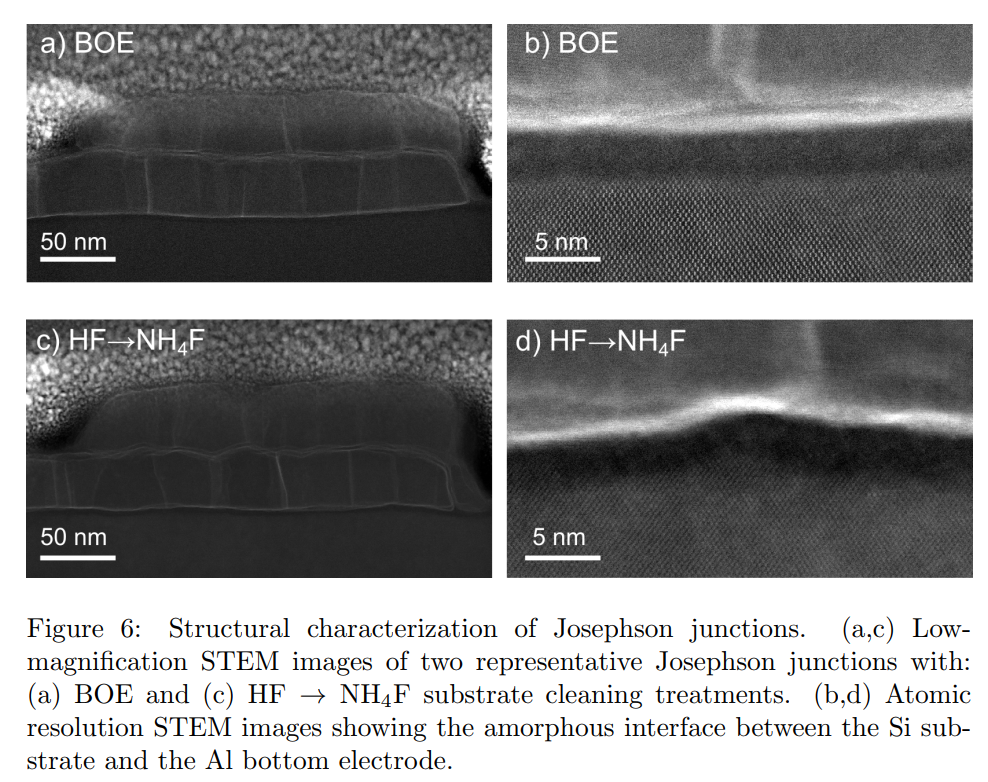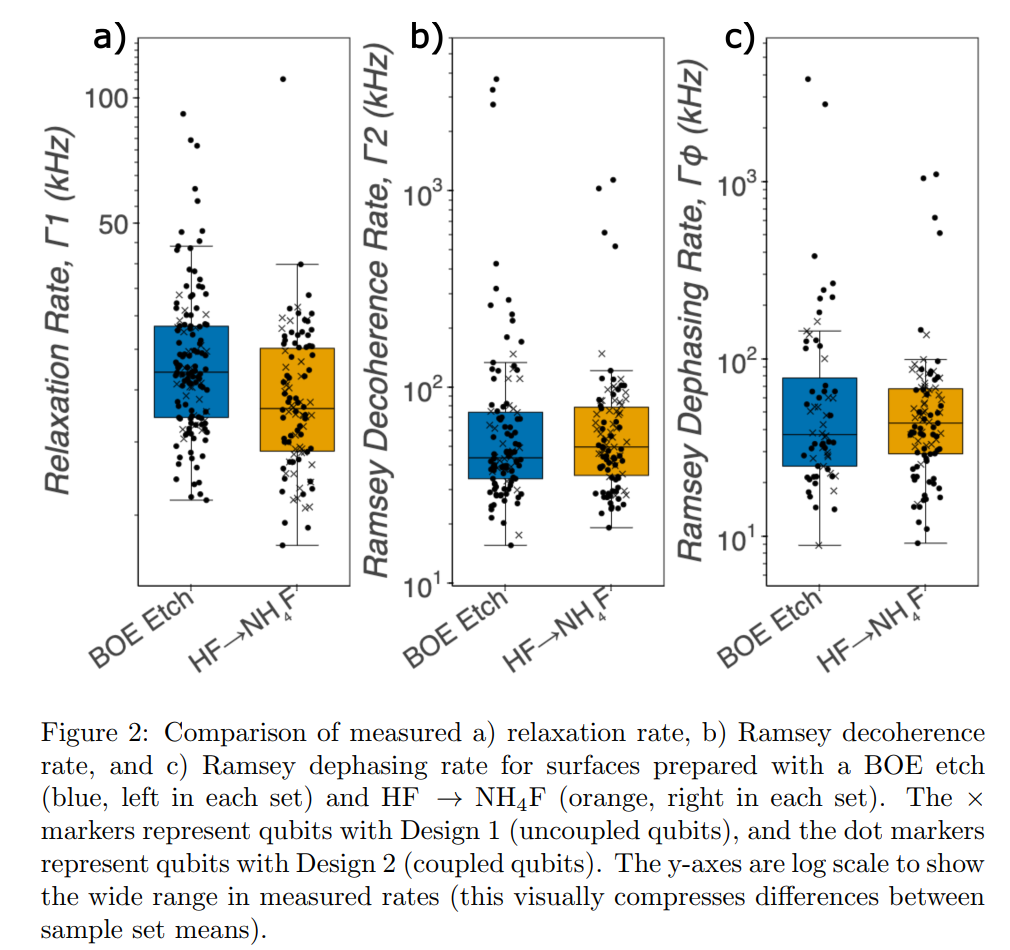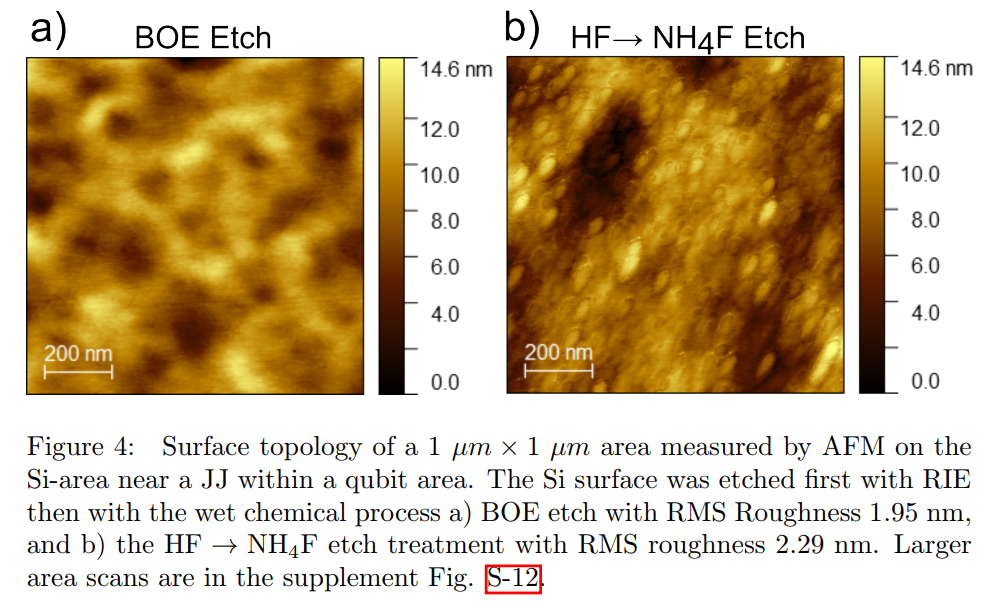Enhanced Superconducting Qubit Performance Through Ammonium Fluoride Etch
2024-08-07 10:13 2794 浏览
The performance of superconducting qubits is often limited by dissipation and two-level systems (TLS) losses. The dominant sources of these losses are believed to originate from amorphous materials and defects at interfaces and surfaces, likely as a result of fabrication processes or ambient exposure. Here, we explore a novel wet chemical surface treatment at the Josephson junction-substrate and the substrate-air interfaces by replacing a buffered oxide etch (BOE) cleaning process with one that uses hydrofluoric acid followed by aqueous ammonium fluoride. We show that the ammonium fluoride etch process results in a statistically significant improvement in median T1 by ∼ 22% (p = 0.002), and a reduction in the number of strongly-coupled TLS in the tunable frequency range. Microwave resonator measurements on samples treated with the ammonium fluoride etch prior to niobium deposition also show ∼ 33% lower TLS-induced loss tangent compared to the BOE treated samples. As the chemical treatment primarily modifies the Josephson junction-substrate interface and substrate-air interface, we perform targeted chemical and structural characterizations to examine materials’ differences at these interfaces and identify multiple microscopic changes that could contribute to decreased TLS.









